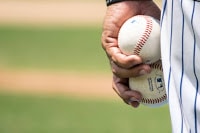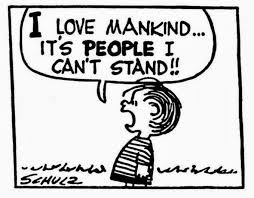 |
Inspired by opening day, which was yesterday, I found myself writing these lyrics:
To the tune of “Take Me Out to the Ball Game)
Take me out to the temple dad
Take me out to the shul,
Let’s hear some prayers and Torah chants,
Maybe the rabbi will break out in dance
For its Ruth, Ruth, Ruth on Shavuot
I’m not talkin’ ‘bout “Babe” you may guess
‘Cause it’s Fun…..To……. Dress up on Purim
At Cee Bee Esss! (CBS)
Solomon Schecter, who was the first President of the Jewish Theological Seminary in the first decades of the twentieth century, was said to have advised his students – all male at the time — “Gentlemen, in order to be a success in the American Rabbinate, you must be able to talk baseball”. Just think about it!. Why would he pick baseball? In the beginning of the 20th century, with antisemitism and anti-immigrant sentiments rising in this country, it was part of a rabbi’s job to make his immigrant Jewish community more American. What could be more American than baseball? Today, of course, one could say that a rabbi”s job is the opposite — to make our community that is by now comfortable being American more Jewish!
The game of baseball is over 150 years old. There are many similarities between baseball and Judaism. For example, the rules of baseball have essentially remained the same over a long period of time. The same with Judaism! Yet baseball is a very different game than when it first began in this country after the Civil War. Judaism, too, is very different than it was 150 years ago.
For example, both Judaism and baseball have become more inclusive. One of the greatest changes in baseball occurred in 1948, when Jackie Robinson became the first African American to play on a Major League team. Prior to that time baseball was a segregated sport. An aspiring African American ball player had to play in what was called “The Negro Leagues” if he wanted to play professional baseball. The Negro Leagues had legendary players — Josh Gibson, Satchel Paige, Buck Leonard, to name a few — but they never had the opportunity to play in the Major Leagues due to segregation. Fairly recently the Major League Baseball is finally making amends by including Negro League statistics in the Major League record book.
In addition to being racially integrated, baseball has recently begun to admit women into its ranks as leaders. The Florida Marlins made headlines last year by naming Kimberly Ng as the first female general manager of any of the four major North American sports leagues. She is also the person of Asian descent to become a general manager of a professional sport. Last year Alyssa Nakken was hired by the San Francisco Giants to be a full time coach. The barriers to women’s participation in Major League baseball are beginning to fall. And yet, there has never been a female Major League umpire. The time will come, I am certain.
Just as baseball has become more inclusive, so Judaism has become more inclusive. The first bat mitzvah in America took place on March 18, 1922. The bat mitzvah was Judith Kaplan, 12 year old daughter of Rabbi Mordechai Kaplan. On that Shabbat morning, Judith did not ascend the pulpit but stood below it. With the Torah scroll covered but in sight, Judith recited the blessing before the Torah, read the Torah portion from her own Chumash in Hebrew and English, and concluded with the blessing after the Torah. Yet, it wasn’t until the 1970s that 13 year old girls began having the same ceremony for their bat mitzvahs that boys that age had for their bar mitzvahs.
Judaism has become more inclusive in its clergy as well. The first woman ordained as a rabbi was Regina Jonus in Berlin in 1935. It was not until 1972, when the Reform Movement ordained Sally Priesand, that the next woman was ordained. There was a time when only men could aspire to be cantors. Today women not only serve as cantors but have contributed significantly to Jewish liturgical music.
In addition to being more inclusive, both baseball and Judaism have experienced many changes. Here are just a few:
In 1895 a held foul tip was first considered a strike
In 1896 Theodore Herzl published The Jewish State
In 1952 Players had to remove their gloves from the field when batting and no equipment was to show on the field at any time.
That same year the Conservative movement allowed driving to shul on Shabbat
In 1968 the pitcher’s mound was dropped 5 inches.
That same year the Reconstructionist Rabbinical Seminary was founded.
In 1973 the American League began to use the designated hitter
In 1983 the Reform movement adopted the Patrilineal Descent resolution.
Despite these changes — and many, many, more throughout the years — baseball remains the same game. Judaism, too, has seen enormous changes but remains at its core the same. Like every aspect of human life, and over time, both have had to adapt, to adjust and to accommodate to remain relevant and germane in our changing world — For baseball, to hold onto its fanbase. For Judaism to hold onto its adherents! I daresay that if Solomon Schecter, the President of the Jewish Theological Seminary could come back today, he would marvel at the changes baseball and Judaism have undergone in the past century. But I am sure he could still enjoy a ballgame — and find a spiritual home in Jewish life today.
Shabbat Shalom
Photo Credit: Jose Francisco Morales at www.unsplash.com


